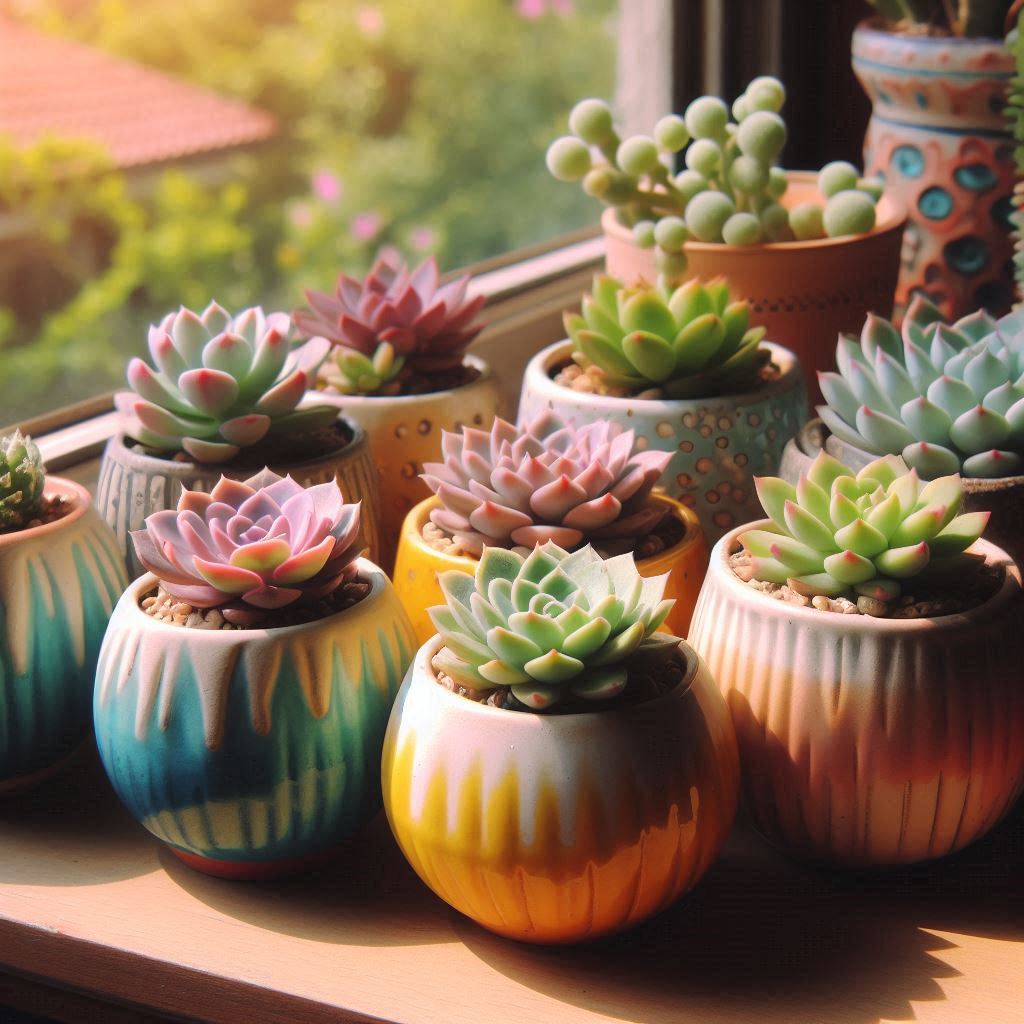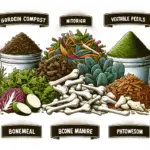Are succulents perennials? This is a common question for plant enthusiasts and garden designers alike. Succulents are known for their resilience and low maintenance, making them ideal candidates for perennial gardens. This article explores whether succulents can truly be considered perennials and how they thrive in various environments, guiding you through essential care tips and stunning design ideas.
Understanding the Perennial Nature of Succulents
Succulents have gained popularity due to their unique ability to survive in various conditions. Their perennial nature refers to their lifespan and growth patterns. Perennials are plants that live for more than two years, continuously growing and thriving each season. Succulents, interestingly, have evolved mechanisms to endure tough climates, often behaving as perennials.
Most succulents are considered perennials because they store water in their leaves, which allows them to survive dry periods. This water retention capability enables them to withstand seasonal changes, even when conditions seem harsh. Their thick, fleshy leaves act as reservoirs, ensuring sustenance when water is scarce, which is a typical trait of perennial plants.
Furthermore, their root systems are designed to absorb vital nutrients and moisture efficiently. This feature bolsters their perennial nature, helping them regain strength and continue thriving yearly. Understanding these survival adaptations explains why many gardeners prefer succulents as long-lasting additions to their collections.
However, it’s crucial to note that not all succulents display perennial characteristics uniformly. While many adapt to colder climates by going dormant, others might not tolerate frost well, which impacts whether they come back annually without extra care. Therefore, knowing the specific needs of your succulent varieties is essential for ensuring they behave as perennials in your environment.
In essence, acknowledging their perennial tendencies sheds light on how to best nurture them for lasting beauty and vitality. Their remarkable resilience and adaptability make succulents a fascinating subject for both beginner and seasoned gardeners who wish to cultivate enduring landscapes.
Which Succulents Are Perennials and Which Are Not?
Perennial Succulents: Know the Difference
Succulents are a diverse group of plants, known for their ability to store water in their leaves, stems, or roots. When it comes to their lifespan, understanding which succulents are perennials and which are not can help gardeners plan better.
Perennial succulents are plants that live for more than two years. Some popular perennial succulents include Sempervivum (commonly known as hen and chicks), certain Sedum varieties, and Agave. These plants are designed to survive through multiple growing seasons.
On the other hand, some succulents are annual or biennial. These plants complete their life cycle in one or two growing seasons. Annual succulents might include certain types of Kalanchoe or Echeveria that might not survive cold temperatures or other environmental conditions.
Climate plays a critical role in determining whether a succulent acts as a perennial. For instance, succulents that are perennial in warmer climates may not survive the winter in colder areas without protection. Understanding these nuances can help in choosing the right plants for your garden’s climate zone.
How Climate Influences Whether Succulents Act as Perennials
The climate plays a significant role in determining whether succulents behave as perennials or not. In warmer regions with mild winters, succulents are more likely to thrive as perennials. This means they can continue growing for several years without being replanted.
In contrast, in areas with harsh, cold winters, the lifespan of succulents is often shorter, as they may not survive extreme frost conditions. However, if the succulents are acclimated or protected by placing them in pots that can be moved indoors, they might still act perennially.
To understand how climate affects succulents as perennials, it’s crucial to consider factors such as temperature variations, humidity, and rainfall. These elements influence the plant’s ability to store water and withstand drought, which are key characteristics of succulents.
By selecting the right succulents for your climate and providing proper care, you can enjoy their perennial nature, regardless of the regional weather conditions. It’s all about matching the plant’s natural habitat with your local climate to ensure lush, thriving succulent plants each year.
With careful observation of your environment, you can anticipate seasonal shifts and adjust your care routines accordingly. This proactive approach helps succulents maintain their perennial behavior, ensuring they remain a beloved part of your garden through various weather changes.
Caring for Perennial Succulents Throughout the Year
To keep your perennial succulents thriving throughout the year, it’s essential to understand their specific needs during each season. Watering requirements for succulents tend to change; in warmer months, they might need more frequent watering, while in the cooler months, less is usually better. Make sure the soil is dry before the next watering to avoid root rot.
Light is another crucial factor. During spring and summer, succulents benefit from more sunlight, which can be direct in many cases. However, in fall and winter, indirect light or filtered sunlight can prevent scorching and leaf burn.
Feeding your succulents is also vital but should be done sparingly. Use a balanced, water-soluble fertilizer once every two months during the growing season, usually from spring to early fall.
Temperature plays a significant role too. Most perennial succulents thrive in temperatures between 60-80°F (15-27°C), and they should be protected from frost. If you live in an area with harsh winters, consider moving your succulents indoors or providing protection if they’re left outside.
Pruning helps promote growth. Trim off any dead leaves or stems to encourage new growth and keep the plant healthy. Repotting may be necessary every couple of years to refresh the soil and allow space for growing roots.
By carefully managing these aspects, you ensure that your perennial succulents not only survive but also flourish, displaying their unique beauty and resilience.
What Makes Succulents Classified as Perennials?
What Makes Succulents Classified as Perennials? Succulents are often grouped with perennials due to their ability to live for more than two years. This is primarily because of their unique adaptations to store water in their leaves, stems, or roots. This characteristic helps them survive in harsh conditions, where water may not be readily available for extended periods.
Unlike annual plants, which complete their lifecycle in a single season, perennials, including many succulents, have the capability to endure year after year. This resilience is vital, especially in environments that experience long droughts. When conditions are favorable again, succulents can thrive and continue their growth cycle without needing to start anew.
The capacity of succulents to be classified as perennials is not just about lifespan but also about their ability to withstand diverse climates by entering a state of dormancy during frost or drought. During dormancy, these plants conserve energy and resources, allowing them to reemerge robustly when the environment becomes supportive once more. Therefore, understanding these survival strategies reveals why succulents frequently fit the perennial classification.
Perennials vs. Annuals: The Lifespan of Succulent Plants
When distinguishing between perennial and annual succulents, it’s crucial to understand their distinct lifespans. Perennial succulents tend to live for several years, shedding their leaves seasonally and regrowing them. Annual succulents, on the other hand, complete their life cycle within a single growing season.
The lifespan of succulents, whether perennial or annual, largely depends on their species and environmental conditions. For instance, species native to arid climates often adapt as perennials due to their drought-resistant nature. These succulents store water in their thick leaves to endure dry seasons.
The variety of succulents classed as perennials often include Agave and Hens-and-Chicks, which are known for their longevity. Their ability to survive over various seasons makes them an excellent choice for gardens looking for year-round greenery.
Environmental conditions such as frost, temperature, and soil moisture also influence whether a succulent behaves as a perennial or annual. In climates with harsh winters, some succulents may not survive outdoors unless insulated or brought indoors during colder months.
Indoor succulents often have an extended lifespan because they benefit from a controlled environment, which protects them from extreme weather. Such conditions help minimize stress and promote health, allowing these plants to thrive for years.
By understanding the distinctions between perennial and annual succulents, gardeners can make informed choices when selecting plants for their gardens. Whether aiming for a long-lasting landscape or simply enjoying a seasonal burst of color, choosing the right type of succulent can profoundly impact your garden’s resilience and beauty.
Indoor vs. Outdoor Succulent Perennials: Differences in Growth
When it comes to growing succulents, understanding the distinction between indoor and outdoor perennial varieties is essential for optimal growth and maintenance. Both types offer unique advantages and challenges, especially when considering their natural habitats and growth patterns.
Light and Temperature Requirements
Indoor succulents often thrive in controlled environments where light and temperature can be manipulated. To ensure their growth, place them near windows with indirect sunlight or use grow lights if necessary. Consistent indoor temperatures also help prevent stress from temperature fluctuations.
On the other hand, outdoor succulents are accustomed to natural sunlight and can withstand more intense light conditions. However, they may need some protection during harsh weather, such as using shade cloths or moving them under eaves to prevent damage from heavy rain or extreme heat.
Watering Practices and Soil Needs
Watering is a delicate balance for succulents, regardless of their environment. Indoor succulents typically need less water due to lower evaporation rates indoors. Ensure proper drainage in pots to avoid water accumulation and root rot.
Conversely, outdoor succulents may require more water, particularly during dry spells or hot seasons. Their soil should be well-draining, often aided by adding sand or grit to improve permeability.
Growth Patterns and Space Considerations
Space can be a limiting factor for indoor succulents, as they are often confined to container gardening. Select compact varieties that do well in pots without sprawling too much.
For those planted outdoors, succulents can spread more and fill larger garden areas. While this allows for more natural growth, ensure they have enough space to prevent overcrowding, which can lead to competition for resources.
Pest and Disease Management
Pest control differs slightly between the two environments. Indoor succulents might confront issues such as mealybugs or spider mites. Regular inspection and organic insecticides can help manage these pests.
Outdoor succulents are often more resilient but can face larger threats such as slugs or snails. Natural predators and barriers can be effective deterrents.
How to Ensure Your Perennial Succulents Thrive in Different Seasons
Succulent Seasons: Tips for Year-Round Care
Succulents are known for their ability to thrive in various conditions, but understanding how to care for them through seasonal changes is crucial for their success. In spring, increase the watering frequency as they come out of dormancy. This is the time when they start to grow actively, so suns exposure and some fertilization with a balanced formula can do wonders.
During the summer, succulents love the sunlight, but too much direct sun can harm them. Ideally, provide them with indirect bright light and ensure they have enough water to prevent drying out, especially for outdoor plants. Over-watering can lead to root rot, so always check the soil moisture.
As autumn approaches, gradually reduce watering as the plants prepare to enter dormancy again. This is a good time to prune any dead leaves and make sure that your succulents are in a pot with good drainage to avoid waterlogging during the wetter months.
In winter, most succulents require significantly less water. Keep them in a bright, sunny spot indoors, as reduced sunlight can be an issue during this time. If you have outdoor succulents in a region where it freezes, considering bringing them inside or providing them with protective coverage.
Year-round care for succulents involves understanding and adapting to these seasonal needs. By adjusting light, water, and environment, you can ensure your succulent perennials remain healthy and thriving no matter the season.
Common Perennial Succulent Varieties for Your Garden
Discovering the world of perennials opens up exciting possibilities for your garden, especially when it comes to succulents. These resilient plants often surprise with their durability and adaptability in diverse climates. Among the many varieties, some are particularly well-suited to be longstanding members of your garden.
Echeveria species are known for their stunning rosette shapes and can thrive year-round in warm climates. They need full sun to partial shade to maintain their vibrant colors. Similarly, Sempervivum, or ‘Hen and Chicks,’ is celebrated for its ability to grow in almost any soil condition. These succulents primarily need minimal water to remain healthy.
The wide array of Agave types can bring unique textures and forms to your garden. Although some varieties of Agave take multiple years to flower, their architectural foliage makes them an attractive, hardy choice. On the smaller side, Haworthia are perfect for indoor gardens, tolerating lower light conditions better than many other succulent types.
If you are looking to add a splash of color, consider Kalanchoe. Known for its bright blooms, it’s one of the more decorative perennials perfect for adding visual interest throughout the year.
Understanding the specific needs of these plants is crucial for integrating them into your garden successfully. Ensure they have well-draining soil and adjust watering routines seasonally. Outdoor arrangements can benefit from occasional fertilization and protection in extreme weather.
By exploring these common perennial succulents, gardeners can develop a vibrant and varied landscape that requires minimal maintenance, yet offers lasting beauty and enjoyment.
Do Succulents Live as Perennials in All Climates?
Succulents are often believed to be perennials, but their survival as such depends heavily on the climate they are in. A perennial plant typically lives for over two years, regrowing every season. However, whether succulents can live as perennials in all climates is a more complex topic.
In mild climates, many succulents thrive year-round without much intervention. They appreciate temperate environments where they can enjoy a balance of sunlight and rain without experiencing extreme weather conditions like heavy frosts or scorching heat. Desert climates, for example, are naturally suited for many succulents.
In contrast, areas with harsh winters may require additional measures to ensure the perennial survival of succulents. If planted outdoors, succulents may need protection such as mulching or covering to insulate them from low temperatures. On the other hand, some gardeners prefer to grow them indoors during the winter months.
Watering habits also change depending on whether succulents are indoors or exposed to external climatic conditions. Indoor succulents might require less watering due to stable indoor temperatures, while outdoor ones might demand more frequent attention due to variations in climate.
Ultimately, with proper care and the right environmental conditions, many succulents can indeed live as perennials, adapting well to diverse climates given they receive the care that their specific type demands.
Maintaining Perennial Succulents Year After Year

Maintaining Consistent Care
Perennial succulents thrive with consistent care over the years. Begin by ensuring they receive the right amount of light. Place them in well-lit areas but avoid intense direct sunlight that can damage their leaves.
Watering is crucial; overwatering is a common mistake. Only water when the soil is completely dry. This encourages roots to grow deeper, strengthening the plant.
Monitor the humidity levels. Succulents prefer low humidity, so consider placing them in areas where moisture in the air is minimal.
Soil and Fertilization
Use a welly-draining soil mix. Cactus soil or a blend of sand, perlite, and potting soil works well. Fertilize sparingly, typically during the growth seasons of spring and summer. Use a balanced, diluted liquid fertilizer.
Pest and Disease Management
Keep an eye out for pests like mealybugs and spider mites. Use natural insecticides or simply wipe the pests away with soapy water. Regularly inspect your succulents to catch any infestations early.
Avoid diseases by ensuring proper airflow around the plants. Crowded spaces can lead to mold and rot. Trim away any dead or diseased leaves to promote health.
Pruning and Repotting
Prune succulents to maintain their shape and remove any dead parts. Repot every couple of years or when they outgrow their pots. Remember to refresh the soil during repotting to provide fresh nutrients.
Taking these steps will ensure your perennial succulents remain healthy and vibrant year after year. Tailor the care to your plant’s specific needs and environmental conditions for the best results.
How to Revive Perennial Succulents After Dormancy
After a period of dormancy, reviving perennial succulents can be a rewarding process. These resilient plants often show their survival prowess during adverse conditions. However, to encourage their revival, there are a few essential steps one should follow. Begin by examining the succulents for any new growth, which typically appears at the tips or base of the plant.
Initial Watering
Start by providing a small amount of water, ensuring the soil is barely damp. Overwatering can harm them at this delicate stage. Let them adjust to regular watering gradually.
Sunlight Adjustment
Position the succulents in a place with indirect, bright sunlight, avoiding the harsh midday sun initially. This helps them adjust without stress. Gradually transition to more sunlight exposure as the growth becomes robust.
Pruning Dead Parts
Remove any dead or shriveled parts to redirect the plant’s energy to new growth. This can help in preventing diseases and improving overall plant health.
Adjusting Soil Nutrients
Occasionally, a little fertilizer may be beneficial after dormancy. Choose a mix suitable for succulents to ensure they receive adequate nutrition. Avoid over-fertilizing, which can lead to more harm than good.
Monitor and Adapt Care
Keep an eye on how the succulents are responding. Modify the care routine based on the plant’s signals, particularly in different seasons.
Which Succulents Are Perennials and Which Are Not?
Many common succulents like Aloe Vera and Agave function as perennials. However, some succulents, depending on their species and growing conditions, may not behave like perennials.
How Climate Influences Whether Succulents Act as Perennials
Climate plays a significant role in whether succulents can act as perennials. In harsher, colder climates, some succulents might only survive as annuals unless given additional protection or indoor care.
Caring for Perennial Succulents Throughout the Year
Perennial succulents require season-specific care to thrive. In spring and summer, they need more sunlight and water, while in fall and winter, less is necessary.
What Makes Succulents Classified as Perennials?
The main factor determining if a succulent is classified as a perennial is its ability to live and regrow over multiple years. This depends on genetic factors and environmental conditions.
Perennials vs. Annuals: The Lifespan of Succulent Plants
Understanding the differences between perennials and annuals helps gardeners plan accordingly. Perennials offer long-term growth while annuals provide seasonal beauty.
Indoor vs. Outdoor Succulent Perennials: Differences in Growth
Indoor succulents often have a controlled environment, which can enhance their perennial nature, whereas outdoor succulents face environmental challenges.
How to Ensure Your Perennial Succulents Thrive in Different Seasons
Adjust watering and sunlight exposure to align with seasonal changes, helping perennial succulents flourish throughout the year.
Common Perennial Succulent Varieties for Your Garden
Some popular perennial varieties include Sedum and Sempervivum. These are robust and well-suited to enduring various climatic conditions.
Do Succulents Live as Perennials in All Climates?
Not all succulents can sustain perennial growth in every climate. They may require special care or indoor conditions in extreme environments.
Maintaining Perennial Succulents Year After Year
Consistent care, proper pruning, and monitoring soil conditions are key to maintaining healthy perennial succulents over multiple years.
How to Revive Perennial Succulents After Dormancy
Reviving dormant succulents involves gradually increasing water and light exposure as the plant begins to emerge from its rest period.







